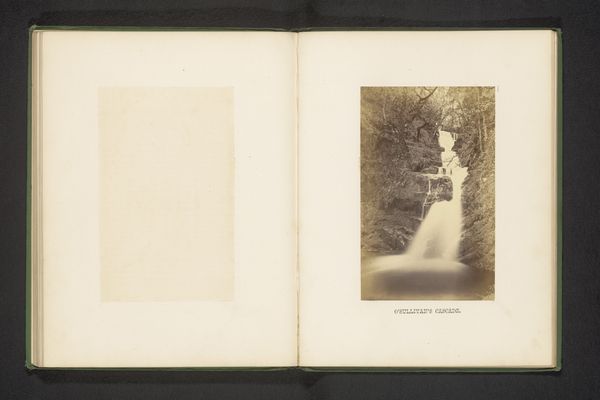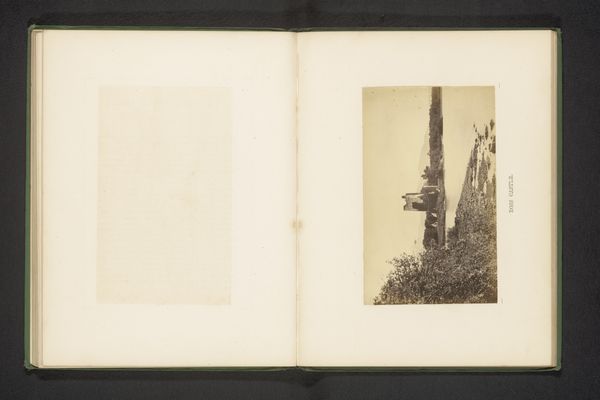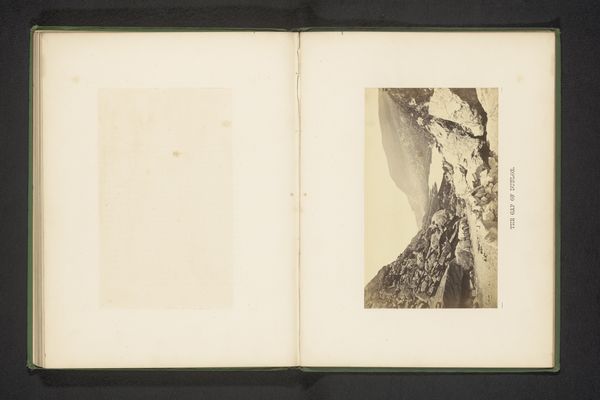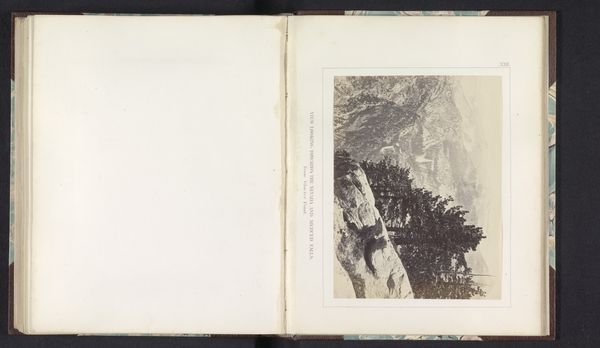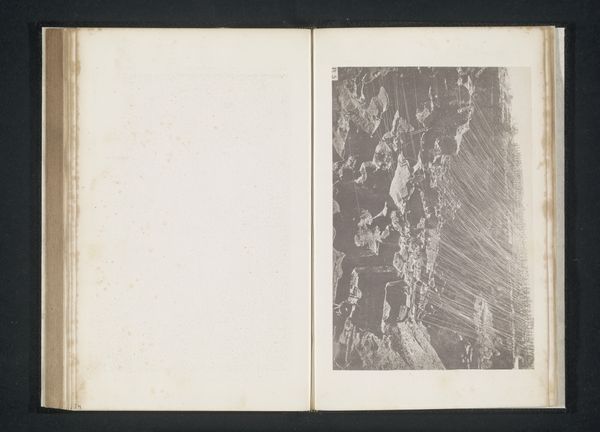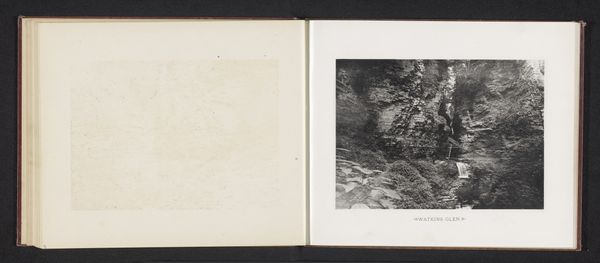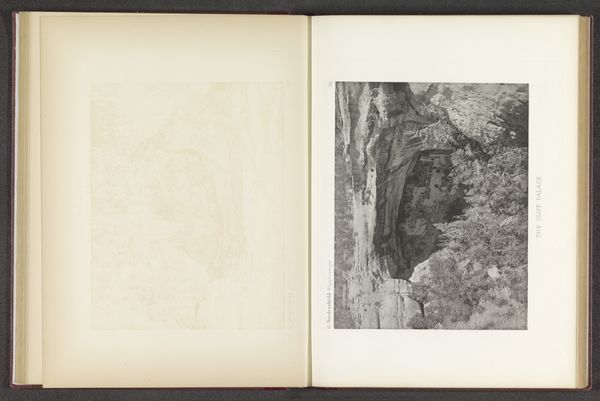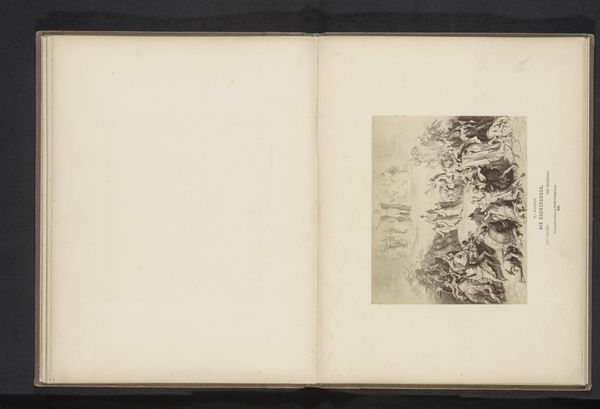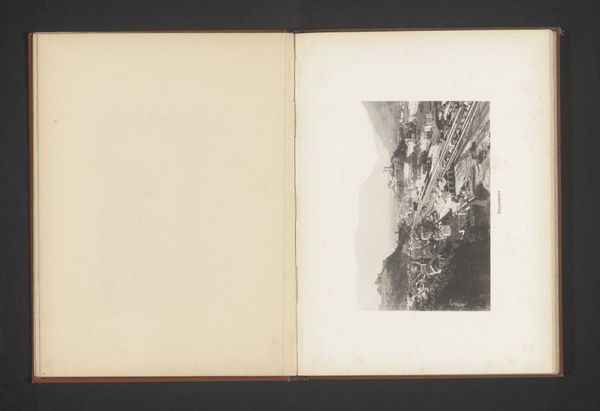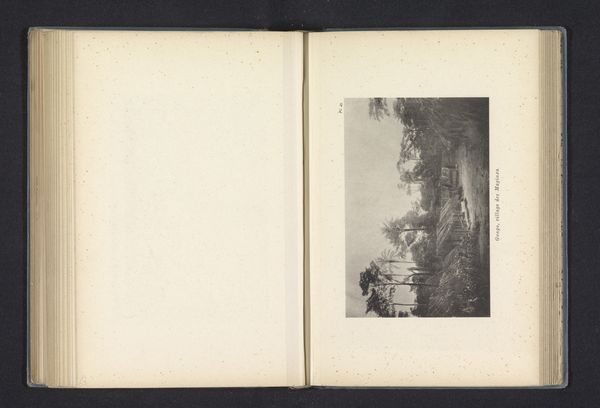
Dimensions: height 173 mm, width 108 mm
Copyright: Rijks Museum: Open Domain
Curator: This albumen print captures "Gezicht op de Torc waterval," or "View of the Torc Waterfall," sometime before 1867, the work of John Hudson. My immediate impression is one of cascading energy, captured in a beautifully subdued palette. Editor: The monochrome contributes so much, doesn’t it? It almost romanticizes the waterfall, taming its force into something delicate, a memory of nature. What’s particularly striking to me is the photograph being framed within the album. Curator: Exactly! Pictorialism often used soft focus and careful composition to elevate photography to an art form akin to painting. Hudson focuses on detail within the landscape to build feeling and, yes, almost nostalgic memory. Water has potent symbolic resonance, representing purification, transformation, but also the passage of time, all rendered permanent here. Editor: Waterfalls were also potent symbols in a society undergoing rapid industrial change. Representing unspoiled nature provided, and arguably continues to offer, a visual sanctuary, a place for respite, reinforcing the Picturesque movement aesthetic sensibilities popular at that time. Were these types of landscapes also tied to political associations in the British context, specifically issues surrounding land ownership and preservation? Curator: Undeniably. To understand how these photographic prints were received in the context of their creation and the socio-political meanings imbued, landscape images often played into specific narratives around nature, land and British identity formation, reflecting how the visual arts, inclusive of photography, served ideological functions tied to empire, class and ownership. The artistic process, however, can allow for shifting perceptions; seeing beyond just picturesque value also depends on who is behind the camera and who the images are created for. Editor: A good point about the subjectivity of artistry, as you say, shifts across cultural frameworks and intention, it really reframes how we look and the meaning imbued through it. What begins as seemingly a neutral representation of nature in Hudson’s work is in fact laden with associations around romanticism, politics and identity, which shifts over time through collective cultural memory and symbolism. Curator: Right, it calls us to consider our own present perspective as much as that of Hudson's time. Editor: A stunning snapshot into both a natural scene and a complex history.
Comments
No comments
Be the first to comment and join the conversation on the ultimate creative platform.
